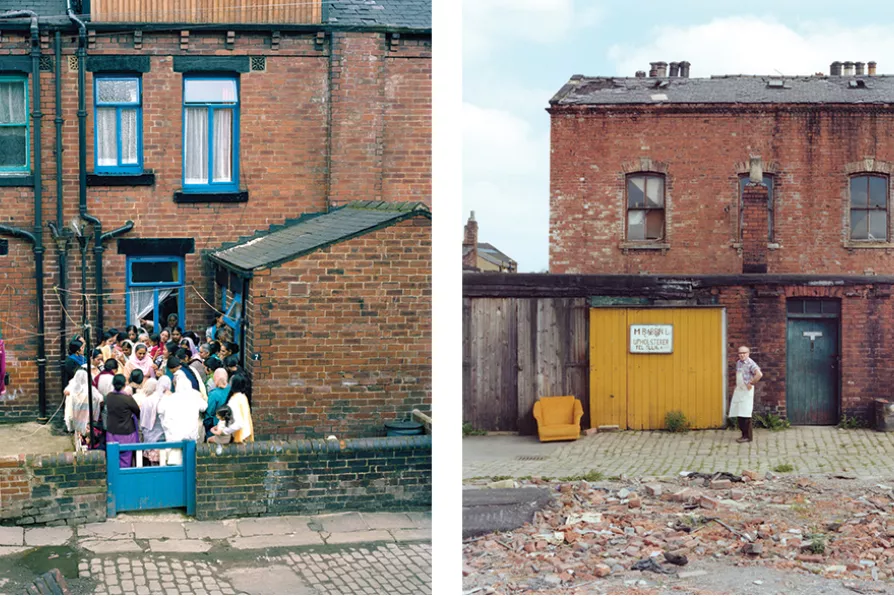SYLVIA HIKINS enjoys a varied Scouse alternative to traditional pantomimes
Lowry of the lens
Peter Mitchell's photography reveals a poetic relationship with Leeds

 (L to R) How many Aunties?, Back Hares Mount, Leeds, 1978; Max Babbin, Vulcan Street, Leeds, 1979
[Peter Mitchell]
(L to R) How many Aunties?, Back Hares Mount, Leeds, 1978; Max Babbin, Vulcan Street, Leeds, 1979
[Peter Mitchell]
Peter Mitchell: Nothing Lasts Forever
The Photographers’ Gallery, London
PETER MITCHELL (born 1943) is widely regarded as one of the most important early colour photographers of the 1970s and ’80s. This important exhibition is dedicated to his work.
He is a self-effacing artist, coming across in interviews as rather Lowry-like: naive, unideological and uncomplicated. Taking photos, or as he says “taking pictures” is simply a necessity for him.
Similar stories

This is poetry in paint, spectacular but never spectacle for its own sake, writes JAN WOOLF

JOHN GREEN surveys the remarkable career of screenwriter Malcolm Hulke and the essential part played by his membership of the Communist Party

ANDY HEDGECOCK relishes two exhibitions that blur the boundaries between art and community engagement

The Morning Star sorts the good eggs from the rotten scoundrels of the year










